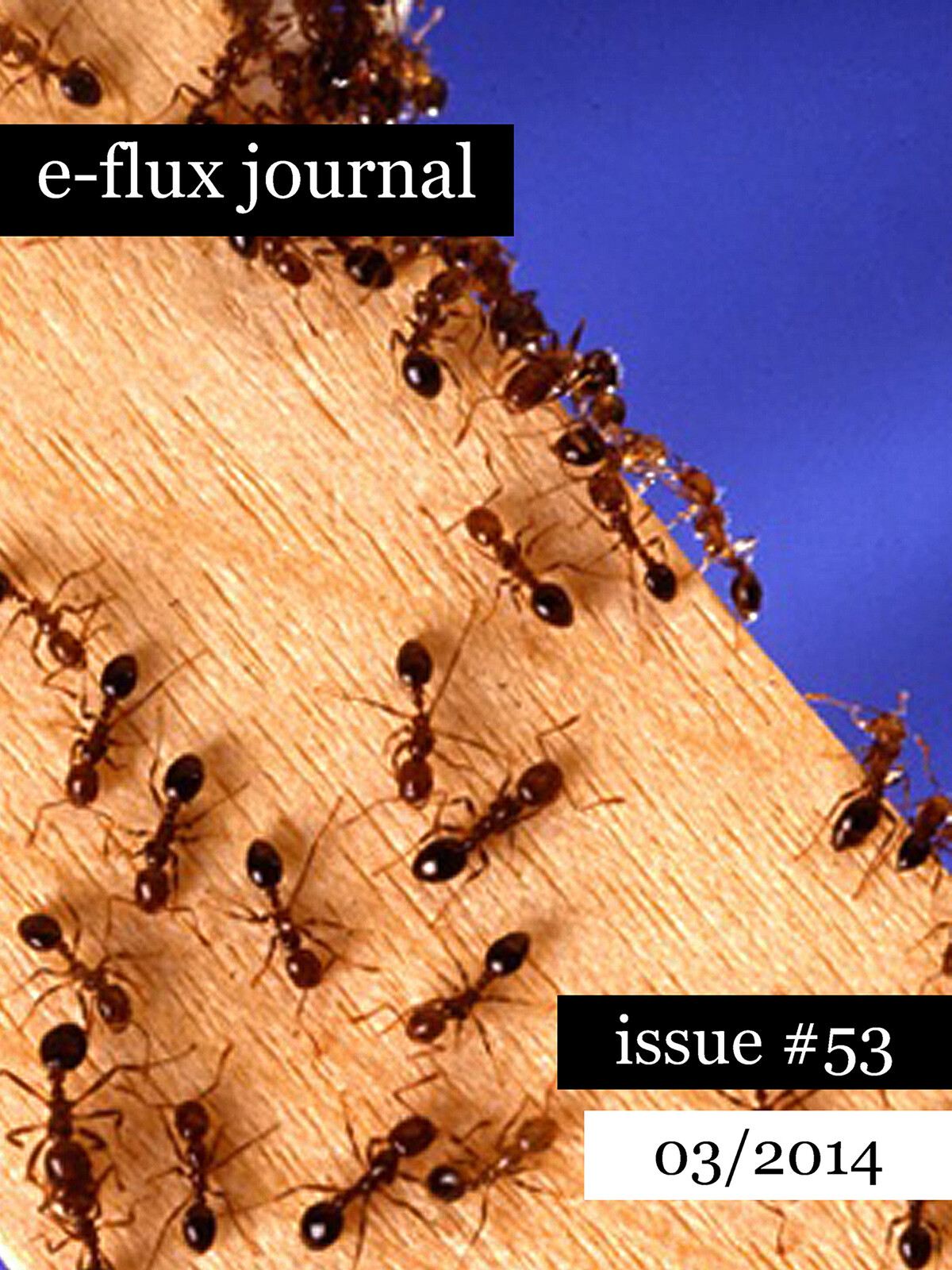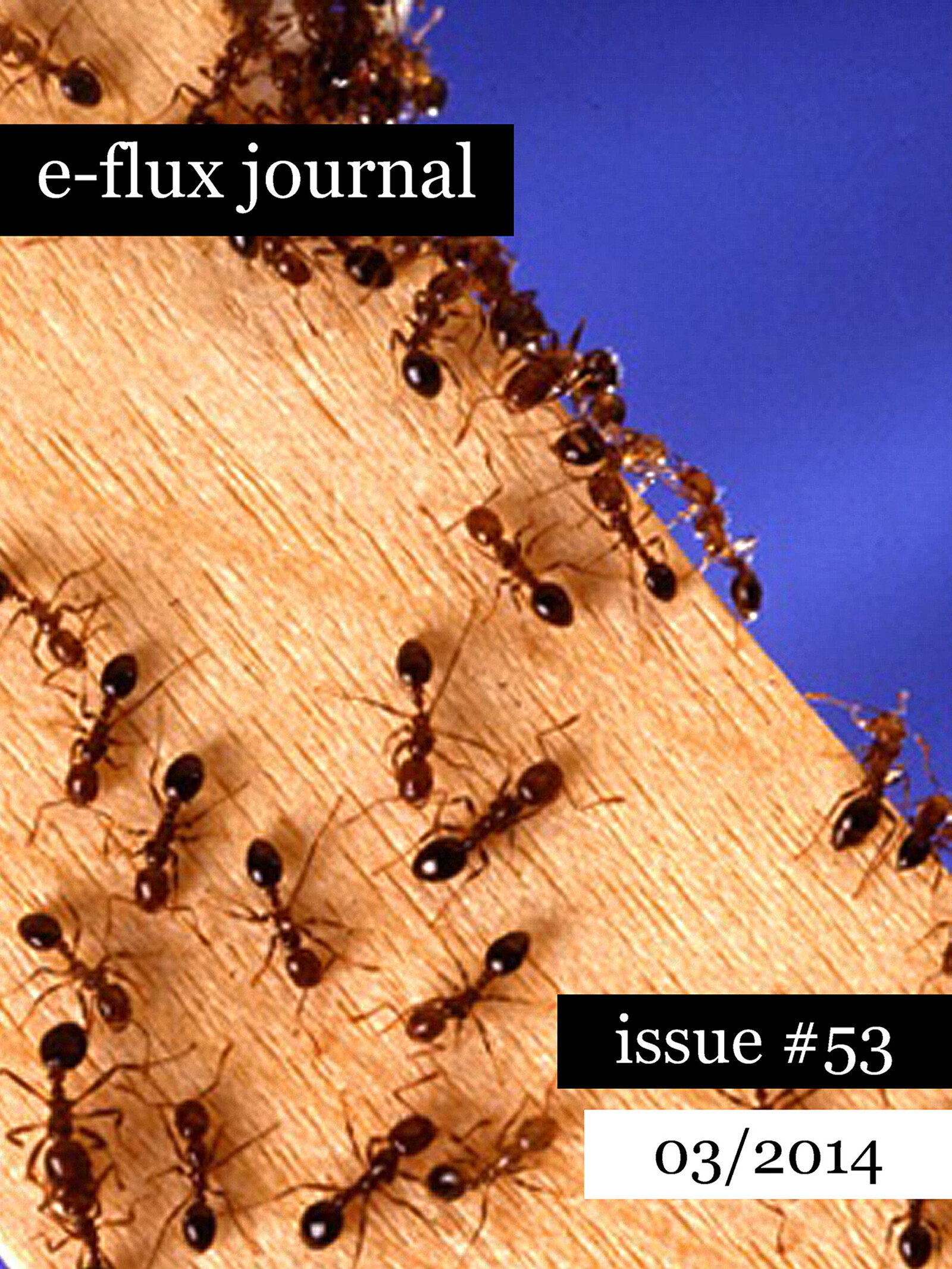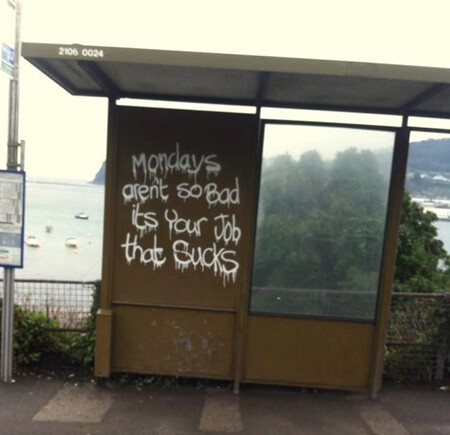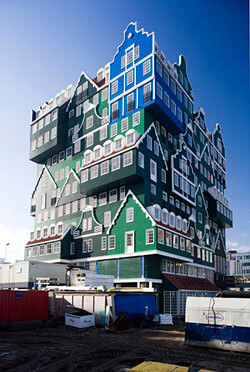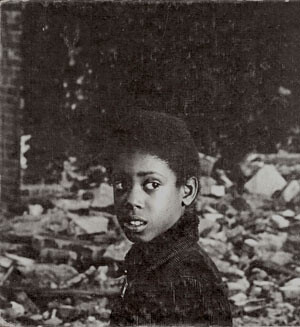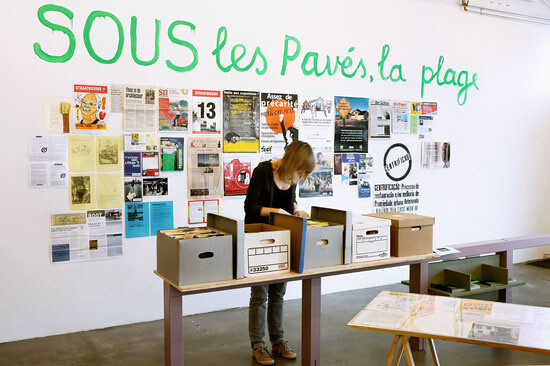The “Manifesto for an Accelerationist Politics” (MAP) 1 opens with a broad acknowledgment of the dramatic scenario of the current crisis: Cataclysm. The denial of the future. An imminent apocalypse. But don’t be afraid! There is nothing politico-theological here. Anyone attracted by that should not read this manifesto. There are also none of the shibboleths of contemporary discourse , or rather, only one: the collapse of the planet’s climate system. But while this is important, here it…
Issue #53
March 2014
With:
Julieta Aranda, Brian Kuan Wood, Anton Vidokle, Antonio Negri, Benjamin H. Bratton, Ane Hjort Guttu, Kim Turcot DiFruscia, Reza Negarestani, Mary Walling Blackburn, Pierre Bal-Blanc, Ferran Barenblit, Alexandra Baudelot, Binna Choi, Eyal Danon, Maria Lind, Pablo Martínez, Sanne Oorthuizen, Emily Pethick, Nataša Petrešin-Bachelez, and Tadej Pogačar
One common explanation for why intellectual property makes no sense in an era of file-sharing uses the example of what happens when you copy a file on a computer. Copy-Paste: a second file has been produced, but the original is unaltered. Now it has a sibling, a partner, a twin. And if they keep reproducing themselves in this way, no problem. Which is to say that, at least in the digital domain, the entire calculus of scarcity is very different from the material domain. The difference…
View List
View Grid
9 Essays
March 2014
Planetary-scale computation takes different forms at different scales: energy grids and mineral sourcing; chthonic cloud infrastructure; urban software and public service privatization; massive universal addressing systems; interfaces drawn by the augmentation of the hand, of the eye, or dissolved into objects; users both overdetermined by self-quantification and exploded by the arrival of legions of nonhuman users (sensors, cars, robots). Instead of seeing the various species of…
In the winter of 2006, I started observing my son Einar’s experiments with form. Einar was creating small arrangements around the house, combining objects or moving them to new places. I documented the arrangements, wondering if a four-year-old related more freely to objects and meaning, or if he had any concept of composition.
These are two egg cups. Einar arranged them on the edge of the sofa, unaware of his actions until I took out the camera:
Some days later, he hung a…
Kim Turcot DiFruscia: Liberalism’s “work” on the body is at the heart of your thought. In your book The Empire of Love (2006), you make a conceptual distinction between “carnality” and “corporeality.” How do you pose the sexual body through that distinction?
Elizabeth A. Povinelli: Empire of Love makes a distinction between “carnality” and “corporeality” for a set of analytical reasons: to try to understand materiality in late-liberal forms of power and to try to…
Continued from “The Labor of the Inhuman, Part I: Human”
Enlightened humanism as a project of commitment to humanity , in the entangled sense of what it means to be human and what it means to make a commitment, is a rational project. It is rational not only because it locates the meaning of human 1 in the space of reasons as a specific horizon of practices, but also and more importantly, because the concept of commitment it adheres to cannot be thought or practiced as a…
Sister Apple, Sister Pig, a book of images and text by Mary Walling Blackburn, emulates a lost literary genre: photo-illustrated children’s books of the 1960s and ’ 70s that cast the child as a protagonist, problem-solver, and model for action in the world. To use this genre is a radical gesture, as modern discourses on abortion have focused largely on the mother’s experience. Nineteenth-century patent medicine companies, for instance, advertised pills for “female irregularity” and…
And pairs that cannot absorb one another in meaning effects
Go backward and forward and there is no place
—Lisa Robertson, “Palinodes”
No one lives in the future. No one lives in the past.
The men who own the city make more sense than we do.
Their actions are clear, their lives are their own.
But you, went behind glass.
—Gang of Four, “Is It Love?”
Over the past few decades, it has often been said that we no longer have an addressee for our political…
Cluster is a network of eight contemporary visual arts organizations located in residential areas on the periphery of European cities (with one member organization in Israel). Each is highly invested in engaging with its particular locality. The network was formed in summer 2011 with the goal of facilitating an exchange of knowledge on how the different member organizations operate and how they relate to their local contexts, to funders, and to the media. Most of the organizations are…
